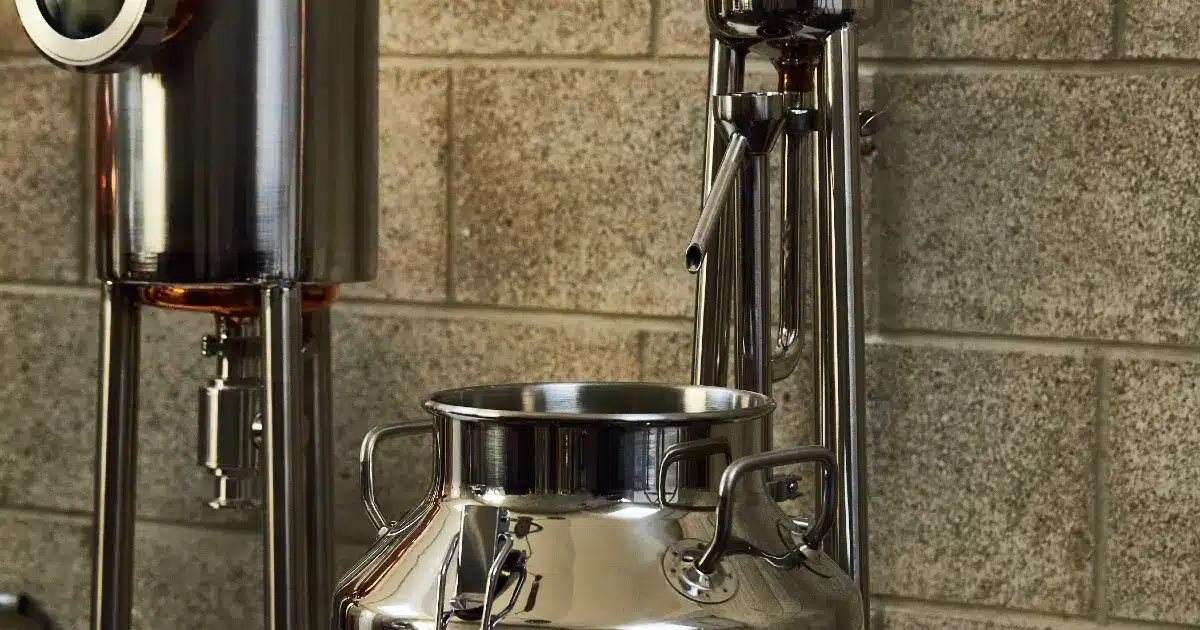VIEW OUR RANGE OF GIN HAMPERS TODAY

There’s a lot of technical jargon in the wonderful world of distilled spirits, and one of the most commonly asked questions in our industry is “What does ABV mean?”
Who doesn’t love a gin hamper? The perfect gifts for drinkers of gin, our hampers rise to any occasion – from birthdays to anniversaries, congratulations to new homes, Christmas or just to say thank you. Discover our range of luxury gin hampers here.
Most countries legally require that this abbreviation is displayed on every alcoholic beverage, so it’s an important term to understand.
Let’s take a look at some of the more confusing terms in the alcohol industry and break them down…
ABV stands for Alcohol By Volume.

ABV, or alcohol by volume, is a measure of alcoholic strength. The amount of ethanol (alcohol) in a container is shown as a percentage of the overall volume of the drink. The higher the percentage, the stronger the alcohol. So, water has an alcoholic strength of 0% ABV, while pure alcohol is 100% ABV.
In more scientific terms, ABV is defined as the number of millilitres (mL) of pure ethanol present in 100mL of solution at 20deg. This percentage is also used to calculate the amount of tax paid on the drink.
You can find the ABV of any alcoholic drink on the label in most countries. It will show a number, followed by the percentage sign.
Some labels use the abbreviation “vol” instead of ABV. So, if the label on a bottle says 20 vol, it means that the content contains 20% pure alcohol.

Just like ABV, alcohol proof is a measure of the amount of ethanol (alcohol) in an alcoholic drink. The term was originally used in England and was equal to about 1.821 times the percentage alcohol by volume (ABV). This term is most commonly used these days in the United States, where alcohol proof is defined as twice the percentage of ABV.
So in the USA, a gin with 40% ABV is 80 proof and one that is 45% ABV is 90 proof.
The term comes from a century ago, when liquor was ‘proofed’ by adding gunpowder and lighting it on fire. If it didn’t light, the alcohol content was deemed too weak. If it burned yellow, it was too strong. But if it burned blue, the proof was just right ( around 57%, or 114 proof).
Even today, a ‘proof spirit’ is 100 proof (50 percent ABV) or higher.
The UK now uses the ABV standard instead of alcohol proof to measure the amount of alcohol in a beverage. We think it’s a bit more straightforward!
Most spirits range from 35 – 45% ABV.
Liqueurs tend to range from 15 – 30% ABV. They’re not as strong as spirits because the base spirit is blended with sugary fruit syrups and sweetened, which dilutes the alcohol.
Ales typically start at 3.5% ABV, but some stronger lagers can have as much as 6 or 7% ABV.
Wine tends to range from 13% to 15%.

In the European Union, the minimum strength of gin is 37.5% ABV. In the USA, it’s 40.0% ABV.
The ABV of Sing Gin is 40%. Along with alcohol, Sing Gin is made from grapes for a silky smooth texture and taste, as well as a blend of seven hand crushed gin botanicals.
Different types of gin have different average ABVs. Most are around the 40% mark, but there are some notable differences.
Fruit gin, or sloe gin has an alcohol content between 15 and 30% ABV. The EU requires sloe gin to be a minimum of 25%.
Flavoured gins tend to have an ABV between 37.5% and 40%.
The strongest gins, Navy Strength style gins, can be up to 58% ABV.
You can learn more about how gin is made in our blog post on the topic.
The ABV standard is used worldwide, although the USA uses the term ‘Proof’.
In France, the term ‘degrees Gay-Lussac’ is used instead of ABV. This is thanks to the French chemist Joseph Louis Gay-Loussac.
Gay-Lussac uses the value of 15deg for temperates instead of 20deg, so the scale is different to ABV.
Ethanol is the chemical compound that makes a drink alcoholic. It is created by a process called fermentation – when yeast is used to break down the sugars in a liquid.
The yeast eats the sugars and create alcohols (including ethanol), flavours (or ‘congeners’) and carbon dioxide (CO2). This creates a liquid that is typically around 10% ABV.
Different foods provide the starting point for different types of alcohol. Wine is made from the sugar in grapes, beer from the sugar in malted barley, cider from the sugar in apples.
Then there are distilled spirits, like vodka, gin, rum and whiskey. Spirits go through a distillation process, which removes the water from the ethanol to create a distilled spirit. These beverages usually contain between 40 and 50% alcohol.
If you’re interested in the distilling process used to make gin, read about what goes on at our distillery.
You can measure ABV using the ABV calculator here.
Did you learn something about ABV from this article? Feel free to share it with a friend or post it on social media!
Looking for the perfect gift for the gin lover in your life? Discover our bespoke range of gin hampers and gift sets here. Perfect for any occasion.
Want exclusive discounts and all the latest news from our Yorkshire distillery? Sign up to our newsletter!
You can also follow Sing Gin on Facebook, Twitter, Instagram and Pinterest.
Next time you’re sipping a Sing Gin, upload a picture of your G&T or gin cocktail recipe and tag us! We feature the best customer photos in our Sing Gin Sippers highlight reel on Instagram.